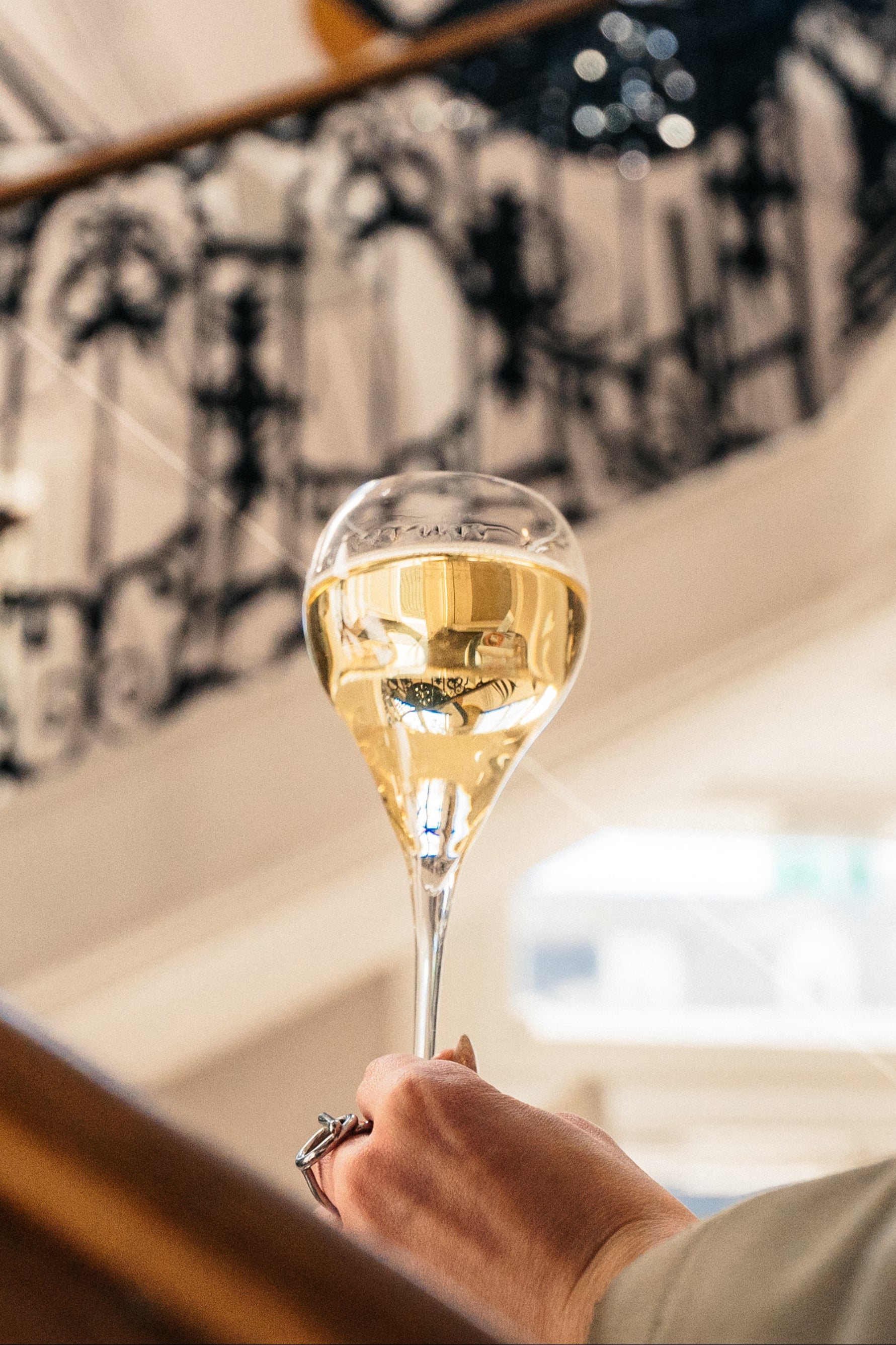How to Recognize a Quality Champagne?
More than a bottle. A promise.
Champagne means celebration, elegance, shared pleasure.
But behind the bubbles lies a truth: not all champagnes are created equal.
How do you distinguish a true champagne from a simple sparkling wine?
Here are the essential markers to choose, enjoy, and understand what makes champagne truly exceptional.
1. The First Pressing: the heart of the fruit
A great champagne is born only from the first pressing.
It’s the purest, noblest part of the juice — revealing finesse and balance.
First press: clear, aromatic, elegant juice → base of premium champagnes.
Second press: more acidic, more bitter → reserved for secondary wines.
At Delphine Révillon, all our cuvées come from 100% first press. A radical choice. A signature of taste.
2. The Fineness of the Bubbles
Bubbles are more than an aesthetic detail.
They tell the story of time, patience, savoir-faire.
Large bubbles → short fermentation, young champagne, aggressive experience.
Fine, persistent bubbles → long aging in cellar, sign of refinement.
Delicate bubbles caress the palate, release aromas, offer a silky sensation.
This is the signature of a refined champagne.
3. Slow Aging
A great champagne is never rushed.
By law, a minimum of 15 months in cellar is required. But exceptional houses let it age far longer.
At Delphine Révillon: minimum 5 years in the cellar.
This slow time transforms the wine: aromas deepen, bubbles refine, texture rounds out.
An invisible luxury to the eye… unforgettable on the palate.
4. Mastered Blending
Quality champagne is never left to chance.
It’s born of precise blending of grapes (Chardonnay, Pinot Noir, Meunier) and vintages.
- Chardonnay: finesse, freshness, floral notes.
- Pinot Noir: structure, power, depth.
- Meunier: roundness, fruit, suppleness.
A successful blend is a work of art.
At Delphine Révillon, the art of blending is guided by a feminine, audacious vision — balancing tradition with modernity.
5. Respect for Terroir
Quality also lies in ethics.
- Manual harvests: respect for the fruit, hand selection.
- Low dosage: revealing natural aromas without masking them.
Champagne is not only about taste.
It is about respect: for the fruit, the terroir, for life itself.
6. Visual & Sensory Markers
Simple clues, even for non-experts:
- Appearance: clear, bright, no residue.
- Bubbles: fine, persistent, forming a regular stream.
- Nose: clean, elegant, no heaviness or alcohol excess.
- Palate: balance, freshness, harmonious finish.
A quality champagne never tires the palate.
It invites a second glass.
Conclusion
A quality champagne can be recognized by:
- Purity of the fruit (1st press).
- Fineness of the bubbles (time & patience).
- Slow, extended aging.
- Balanced blending.
- Respect for terroir and life.
And above all, by what it makes you feel.
An emotion. A desire to share.
Because true champagne is not made to impress.
It is made to bring people together.
— Champagne Delphine Révillon
#DrinkBetter



